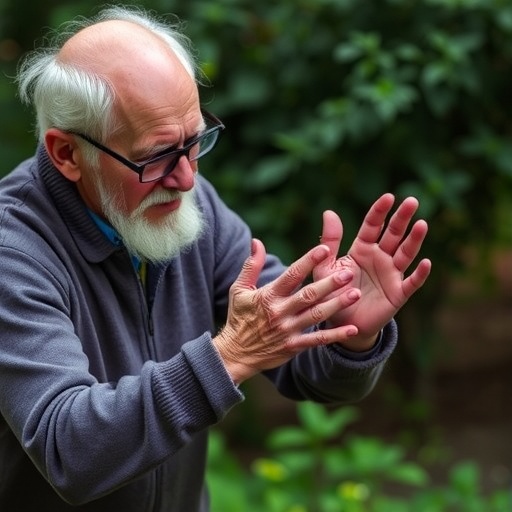
Credit: Michael E. Newman/NIST
The air we breathe out can help us improve the quality of the air we breathe in.
Measurements of indoor carbon dioxide (CO2) concentrations are used to evaluate indoor air quality, which is strongly linked to the levels of contaminants, such as gases and particles, circulating about with CO2. This information also can be used to control ventilation, which helps clean the air, and reduce the need for heating and cooling, which saves energy. However, according to National Institute of Standards and Technology (NIST) mechanical engineer Andrew Persily and George Mason University nutrition professor and human metabolism scientist Lilian de Jonge, the formula that's been used since the early 1980s to estimate an integral part of those calculations — the amount of CO2 generated by building occupants — relies on old data and a method lacking scientific documentation. This means current estimates of CO2 generation rates may be off by as much as 25 percent.
To help address the problem, Persily and de Jonge have developed a new computation method that uses well-established concepts from the study of human metabolism and exercise physiology relating CO2 generation rates to body size and composition, diet and level of physical activity. This results in more accurate estimates of the CO2 generated by individuals, the researchers said, which subsequently yields an improved estimate of the concentration produced by a building's entire occupant population.
The researchers report their work in the journal Indoor Air.
Surveying nearly four decades of literature on carbon dioxide generation by building occupants, Persily and de Jonge discovered numerous problems with the commonly used method for quantifying the metabolic rate of an individual. They also found issues with the equation for estimating the ratio of inhaled oxygen and exhaled CO2 used to calculate CO2 generation.
"Besides the fact that the CO2 generation formula dates to the 1980s and does not consider the significant advances made in the study of human metabolism and physiology since that time, we could not find much scientific evidence to support it in the first place," Persily said. "As a result, we now have to question the accuracy of any CO2 generation rates previously reported."
Persily and de Jonge's concerns were validated by a recent Chinese study of indoor air environments that showed measurements of generated CO2 calculated with the currently used method overestimated the actual amounts by about 25 percent in women and 16 percent in men.
To increase the accuracy and reliability of indoor CO2 measurements, Persily and de Jonge turned to established science done by researchers combating the problem of obesity.
"In the past thirty years, the average American's diet and body composition–we now have more fat and less muscle — have changed significantly, so the fields of human metabolism and exercise physiology have focused on characterizing energy requirements, especially in relation to diet and exercise," de Jonge explained. "This knowledge led to a better way to calculate how much oxygen is needed to meet those needs, and using the same strategy, we were able to improve how exhaled CO2 is estimated as well."
Persily and de Jonge's new approach uses the basal metabolic rate (BMR) of an individual — the minimum amount of energy he or she expends while at rest — combined with that person's level of physical activity to more accurately derive the amount of CO2 produced by the occupants of an indoor space. The BMR also considers the sex, age and body size — using mass rather than surface area — of the individuals making up the group.
"This is a significant improvement over the traditional method for calculating CO2 because body mass is easily measured while surface area can typically only be estimated," de Jonge said.
Persily and de Jonge will next work on validating their technique so that it can move toward broad acceptance and usage. They also will study its impacts on improving indoor air quality and reducing energy use.
"We hope that our calculation method will eventually be used to determine the optimal CO2 levels needed to achieve more reliable, cost-effective and energy-efficient operation of demand control ventilation systems, devices that use smart sensors that regulate when and how much outside air to bring into an indoor environment," Persily said.
###
A. Persily and L. de Jonge. Carbon Dioxide Generation Rates for Building Occupants. Indoor Air (April 2017). DOI: 10.1111/ina.12383
Media Contact
Michael E. Newman
[email protected]
301-975-3025
@usnistgov
http://www.nist.gov
############
Story Source: Materials provided by Scienmag





